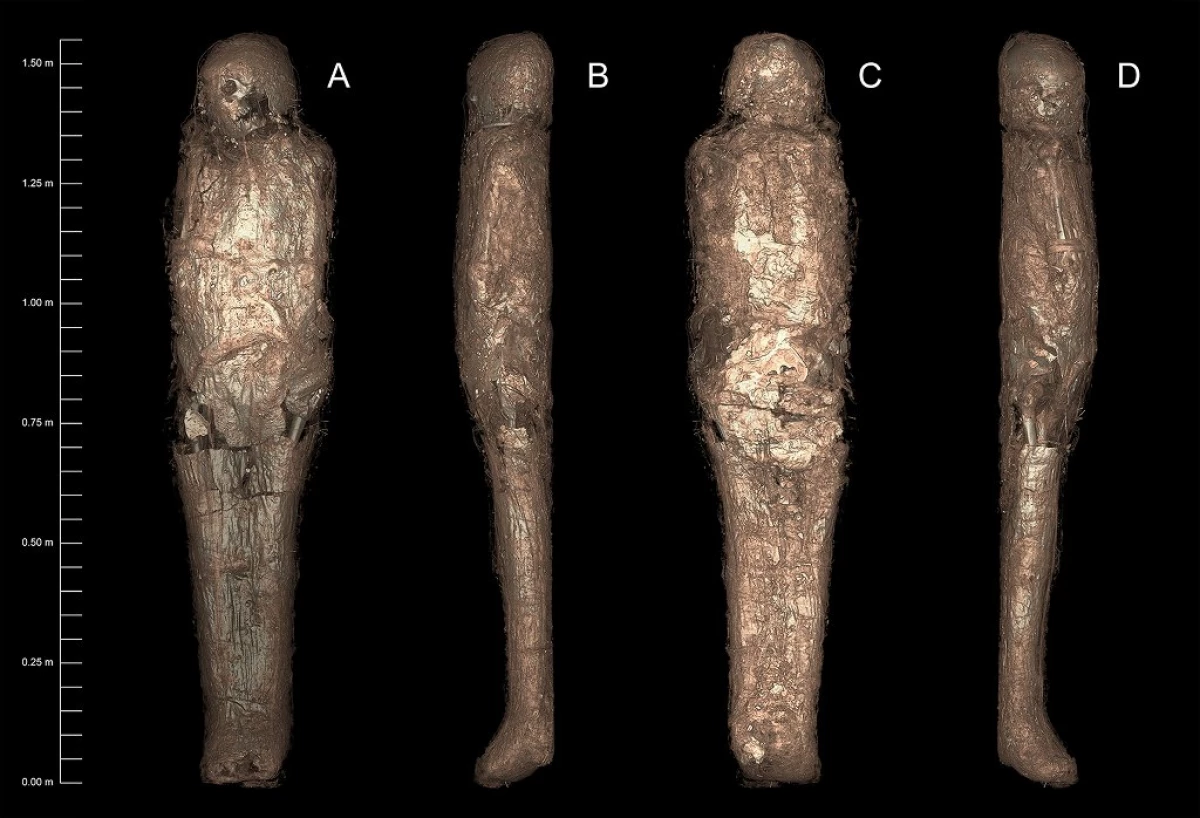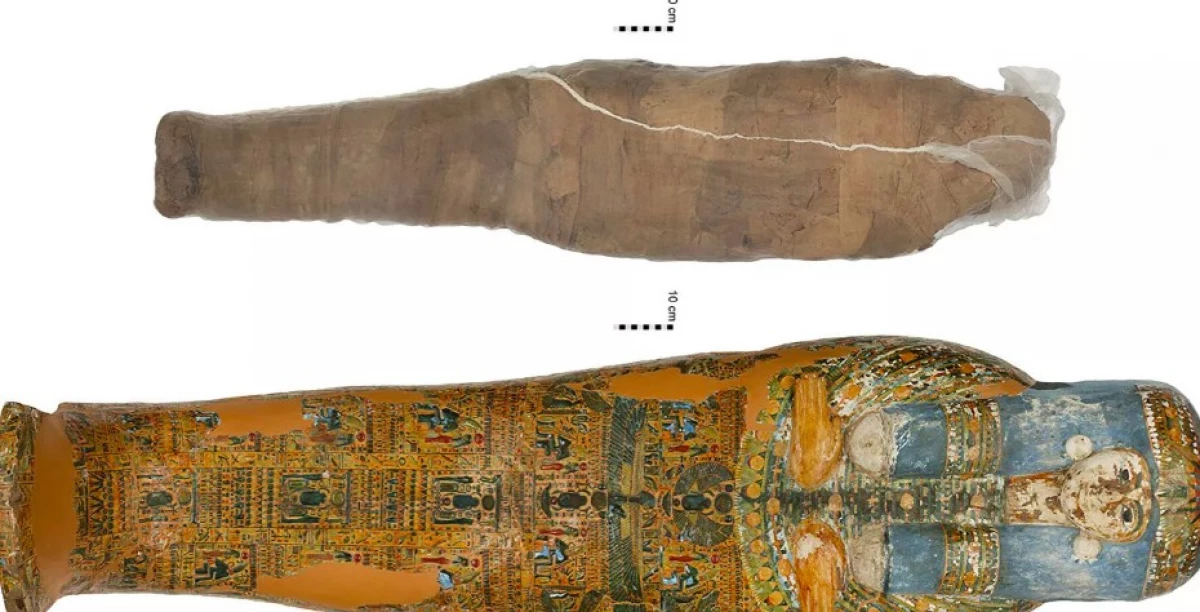
In Egypt, the period of the new kingdom (1294-945 BC), mummified bodies wrapped in Leng, sometimes protected by an additional solid resin sheath, especially when it was about the kings and other representatives of the highest sections of society. However, despite the abundance of scientific research conducted since then, such features mention not particularly often.
Australian archaeologists from the University of McKori disclosed details of the rare method of preserving mummies - it was placed in a kind of "shell" from the mud. The results of their work are published in the Plos One magazine.

Initially, the mummified body and sarcophagus with a lid acquired Sir Charles Nicholson during a trip to Egypt in 1856-1857. A few years later he presented them with the Sydney University, in which since then the mummy has been kept. According to the inscription on the sarcophagus, which dated about 1010 by the year BC (21st Dynasty of the New Kingdom), the woman was resting inside named Merua. However, DNA results in 1999 identified the body as a male.
The authors of the new study decided to re-conduct full computed tomography: as it turned out, the local merchants were placed in the sarcophagus mummified body of another person in the sarcophagus to get the opportunity to sell a full "set." With the help of the visualization of the dentition and skeleton, scientists found out that at the time of death, this person was about 26-35 years.
Although when scanning the body did not reveal outdoor genital organs, and the internal reproductive organs were removed in the process of mummification, secondary sexual signs (pelvic bones, jaw and skull) convincingly showed that in front of archaeologists - still the mummy of women. The analysis of the technology of the mummification and radiocarbon dating of fabric samples from flax allowed us to dawn it with a period of late New Kingdom (1200-1113 BC), and the sarcophagus, as it turned out, created much later - and he had no relation to the deceased.

Scanning also helped to find out that the mud sheath completely covers the body - it was left between two layers of linen fabric. As shown by the images of the first layers, the corpse was damaged shortly after the initial mummification, many bones were shone, were fragmented, and there were no fragments at all. Apparently, the mummy was revealed under unknown circumstances, and for recovery, repeated wrapping and mud shell were used. The face was then covered with a red-brown chopped mineral pigment.
"For the most part, the shell appeared, apparently applied by adjacent layers, while some areas demonstrate the layering corresponding to the subsequent application of additional sheets of the material. The shell stretches from the skin of the skull to the phalange of the fingers of the foot. At the same time, it is completely absent at the level of the lower jaw, "the scientists write. Later, the body again turned out to be damaged on the right side, in the neck, skull and face.
Mud shell, according to the authors of the study, performed a triple task. First, it was a form of conservation of the body that received serious posthumous damage: the tomb of the kings and even simple graves often robbed immediately after burial. Those who were responsible for the restoration of the appearance of mummy and repeated mummifying were probably no more than one or two generations younger than the deceased.
"Secondly, the shell contributed to the metaphysical transition of the died in the afterlife and the scope of God Osiris. The dead could hope for continued existence, if it was properly prepared. Similar to Osiris, the body of which was broken into parts and was collected together, the death of a person was the separation of various bodily fragments, which were then to restore through the act of mummification. Thus, embalming, wrapping and dressing turned the deceased in the creature, able to join Osiris in the afterlife. In the case of the mummy we studied, its integrity was broken. The subsequent application of the mud armor in combination with some repeated wrapping would serve as a reunification of the bodily integrity of the deceased and ensuring its constant communication with Osiris. The dirt may be considered particularly effective in this process, "the archaeologists explained.
Finally, the restoring shell imitated the elite funeral practices of the time: Smolyan Panciri on the bodies of representatives of the highest sections of society and the kings met in the 18th, 19th and 20th dynasties of the new kingdom. Less rich people could not afford expensive imported resins - especially in the quantities needed to create a "shell" around the body. "However, the imitation of the" elite "methods of burial could be achieved through the use of cheaper materials. In our case, the mud armor could carry not only regenerative functions, but also be an appropriate and inexpensive solution for mummification. Thus, the mummy we studied by us can be a unique phenomenon of the imitation of the funeral customs of the elite, "the scientists summed up.
Source: Naked Science
